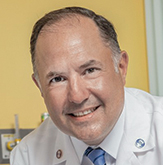Creating strong working relationships between physicians & leadership is crucial
With the continuing impact of supply chain challenges on hospitals and health systems, a strong and healthy working relationship among physicians, supply chain managers and executive leadership is crucial.
At the 2023 HealthTrust University Conference, a panel featuring three HealthTrust Physician Advisors discussed best practices for bridging this divide.
Everyone is aware of the global factors impacting supply chain, whether it’s inflation, labor shortages, logistics, raw materials, the war in Ukraine (and now the one in Israel)—the list goes on. But do you think your physicians are informed about how this global supply chain has impacted their day-to-day lives? The session’s panelists suggested that the answer to that question was ‘no.’
They suggested these tactics to build and improve relationships between physicians and supply chain and executive leadership:
- Engage early to align around common goals & mission
- Focus on trust & understand motivations
- Facilitate open communication to share concerns
- Collaborate to drive patient-centered decisions
- Leverage evidence & lead with quality & patient safety issues
- Ensure transparency of cost & goals
- Include frontline clinicians & other staff in decisions
- Preserve physician autonomy & respect
HealthTrust Physician Advisors James Bruffey, M.D., FAAOS; Vijay Chilakamarri, M.D., FACC; and Jason Mouzakes, M.D., FAAP, shared their experiences and perspectives on creating strong working relationships between physicians and leadership at their hospitals.
Common goals & mission
Strong relationships between clinicians and leadership are built on a foundation of trust and transparency. Historically, this relationship has experienced some tension, but ensuring all parties understand they are trying to solve the same problem, even if through a different lens, can start to alleviate that tension.

“When you put a group of physicians and administration in one room, it is surprising to me how many times there’s a bit of an adversarial atmosphere,” said Dr. Chilakamarri, Chief of Cardiology at Lutheran Health Physicians in Fort Wayne, Indiana. “The recognition that we are all on the same side was very important for our team. Building relationships took a while, but trust was fundamental, and the fact that we are here to create a win-win situation for everybody—for the physicians, the patients and the hospital network—had to be verbalized.”
Aligning around common goals and a shared mission can help to build mutual understanding and trust, but only if all parties are transparent about what they need and want from the others. “Without transparency, it’s almost impossible to collaborate,” said Dr. Mouzakes, an ear, nose and throat specialist and the interim Hospital General Director at the Albany Medical Center Hospital in Albany, New York. “If your executive team or your supply chain team is working toward a different set of goals that are not coordinated, all the work we do will potentially be for naught—which, for physicians, can create distrust.”

Dr. Bruffey, an orthopedic surgeon at Scripps Health in San Diego, added, “We had to trust them to listen to what we were saying, and they had to trust us to understand that we also have a vested interest in not only doing what’s right for our patients, but also doing what’s best financially for our health system. Ultimately, that is also good for us as physicians.”
Shared decision-making
Scripps Health recognizes the value of engaging physicians in decision-making and is committed to improving its existing processes.
“Our system is trying to determine how to involve us as physician leaders,” explained Dr. Bruffey. “They’ve got to trust us to be able to make decisions that are good for the health system, but also provide the correct process for us to share in the decision-making. We’ve got to place trust in our physician leaders to make decisions that allow them to be most effective at what they do.”
Scripps has past successes to build on. About a decade ago, it created physician-led service lines. “We recognized that it was not in the system’s best interest if there was no physician involvement in the decision-making for supply chain activities with regard to the implants, biologics and capital equipment. When those things are not meshed with what the physicians need and want, you tend to waste more money,” shared Dr. Bruffey.
Dr. Bruffey warned against engaging physicians in the decision-making process without structures and accountability to ensure their perspectives are valued and taken seriously. “As a physician, nothing is more frustrating than when you go through a very long value analysis process, and you have no say in the decision at the end.”
Open communication
“I have learned in my leadership position that you can’t overemphasize the importance of communication,” said Dr. Mouzakes, who pointed to the value of regularly scheduled meetings to convey important information, address challenges and build trust.

Albany Medical Center starts its day with a safety brief, where issues affecting patient safety, including supply chain, are reported. “The entire hospital system is aware, on that brief 10-minute morning call, if there’s been a change in the status of supplies. As a surgeon, it’s absolutely mission-critical to know,” Dr. Mouzakes explained.
Dr. Chilakamarri acknowledges that he hasn’t always recognized the importance of physicians being aware of supply chain issues. “COVID was a big learning experience in this regard. Before, it sometimes felt like it was a chore that physicians were made to do. However, once COVID hit, we were surprised to see how many things were impacted. Simple things that you wouldn’t even think were an important part of your procedure—like tubing, syringes and IV lines—had a major impact. Nothing can actually happen without those supplies.”
To respond to the disruptions caused by COVID, Lutheran Hospital increased the frequency of safety huddles and invited representatives from supply chain to the meetings.
The cardiology department now holds three safety huddles every week, each with a different focus. For example, interventional cardiologists, cardiac surgeons, nurse coordinators, the cath lab director and the cath lab inventory manager attend a huddle focused on structural heart procedures scheduled for that week. This ensures all the required equipment is available when needed.
“If you’re able to communicate with the supply chain team and physicians, it reduces a lot of heartache that can happen when you are starting a procedure in the cath lab and find out that something’s on back order,” said Dr. Chilakamarri. “By knowing in advance, you can change your procedure or learn to use something different.”
Frontline change agents
Recently, physicians at Scripps Health led the change in how the hospital trials capital equipment. Previously, there was a requirement that funding for equipment be identified before a trial. Now, equipment is trialed first to see if it’s a good fit for the team. “It’s way more cost-effective for our system because you’re not having to identify a million dollars of funding, for example, on a capital piece of equipment that we’re not going to buy anyway because the physicians don’t like it,” explained Dr. Bruffey.
That’s just one example of how a strong relationship between physicians and leadership can empower physicians to act as change agents with tangible benefits. Other frontline team members can also offer fresh perspectives and solutions that might otherwise be overlooked. “We have a radiation tech as part of our team, and they can tell you where there’s a lot of waste and learnings that you would probably not even pay any attention to,” shared Dr. Chilakamarri. “The first few times that we met, there was a bit of resistance from administration and physicians to taking advice from somebody on the front line. But once we were open to their suggestions and could temporarily take off our physician or MBA hats—that’s when we really benefitted.”
Bringing great minds together
Over the past two years, physicians and leadership at Albany Medical Center Hospital have worked together to tackle financial challenges. “Our CEO launched our path forward with intentional transparency, engagement and collaboration,” said Dr. Mouzakes. “He created dyads and working relationships between the administrative side and physician leadership. That was really impactful, and it showed that we can get things done as a team.” For example, nursing leaders, ancillary support leadership, supply chain, anesthesia colleagues and surgeons collaborated to optimize operating room utilization.
The result of all this collaboration and hard work? A $75 million improvement on losses from 2022 to 2023. This year, they are aiming to break even.
“One of the worst things that we do is operate in silos when we have such creative and innovative minds around the table,” shared Dr. Mouzakes. “As long as your organization has collaboration and communication that is open, transparent and trusting on all fronts, then it is a formula for success.”
Share Email Physician Advisor, Q2 2024, Supplier Relationships, Supply Chain Management




